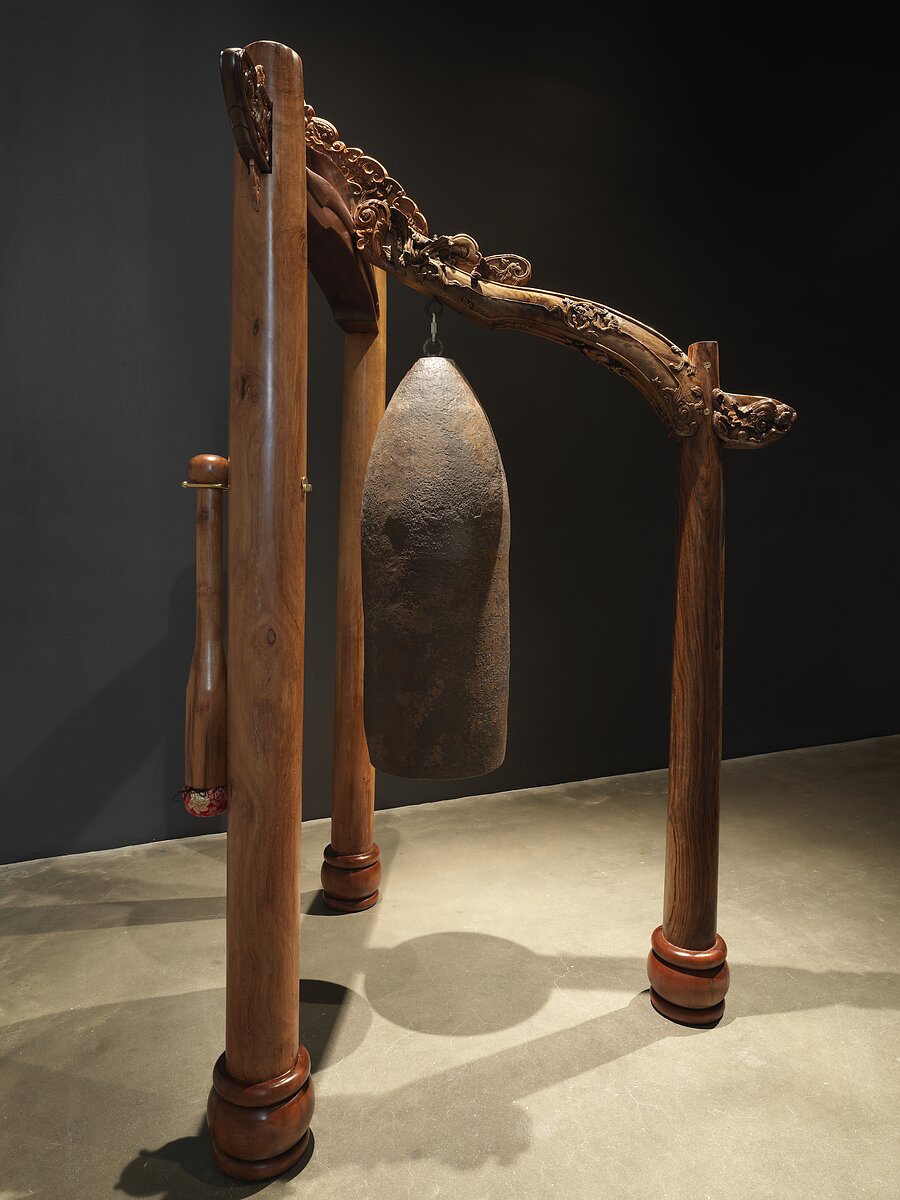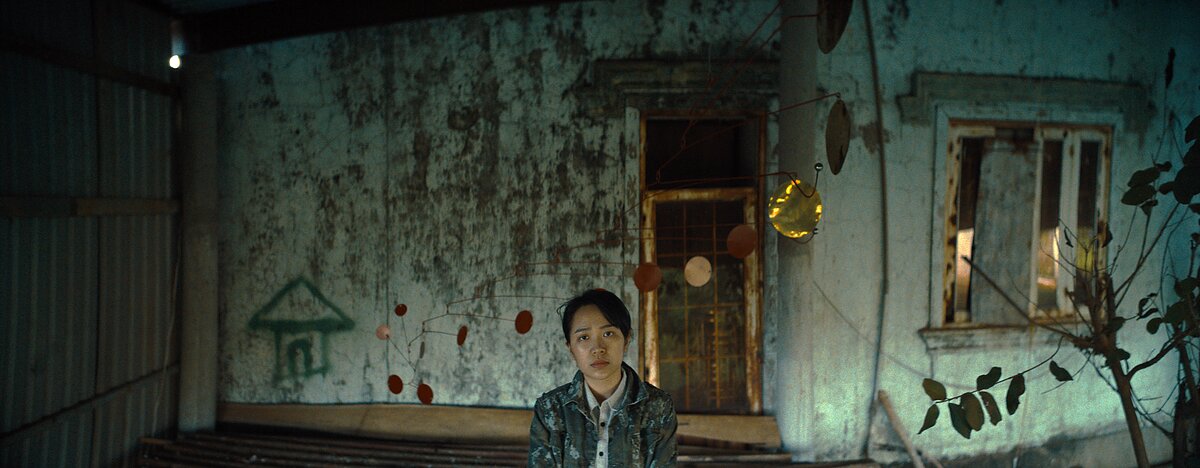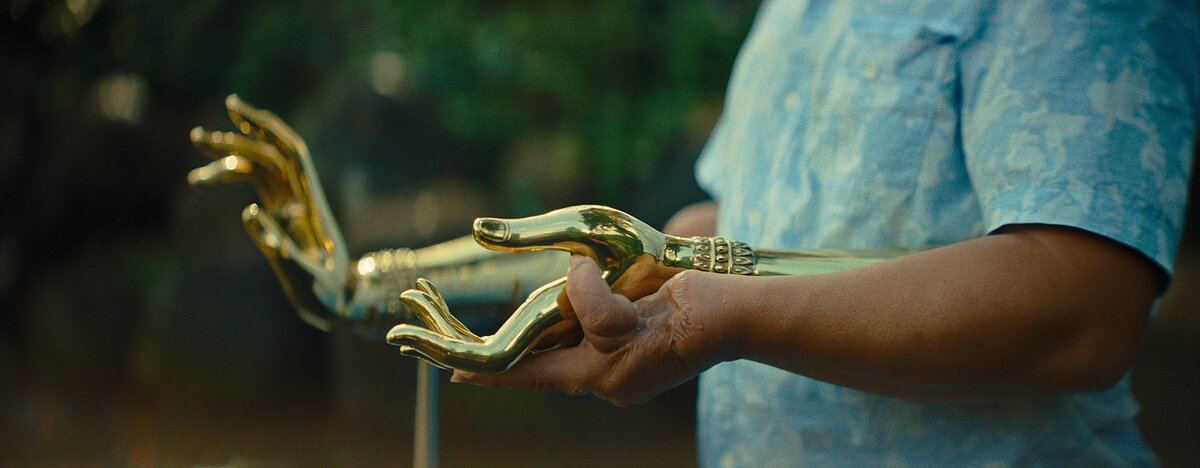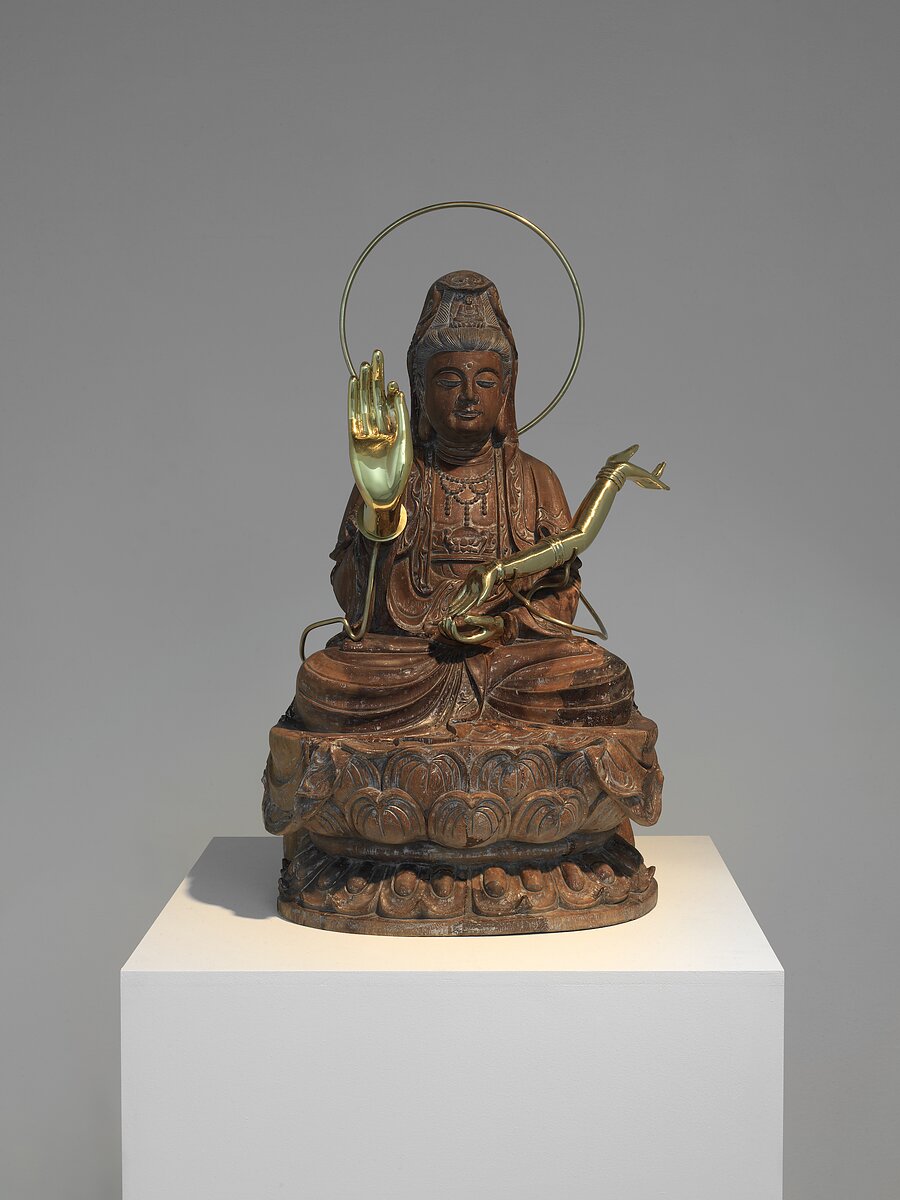Memory is Cyclical in Tuan Andrew Nguyen’s “Radiant Remembrance"
Throughout the third floor galleries of the New Museum, Tuan Andrew Nguyen’s solo exhibition, “Radiant Remembrance” (on view from June 29 to September 17, 2023) delves into war memories obscured by colonial space, time, and epistemology. A multimedia installation of sculptural, archival, photographic, and filmic elements, the exhibit examines the sonic, visual, and affective dimensions of rememory. As developed by writer Toni Morrison in Beloved, “rememory” describes the recollection of repressed or forgotten pasts, entailing processes of not only excavation, but also—as Nguyen demonstrates––enjambment. “Radiant Remembrance” highlights the continuation of lives, histories, and materialities beyond spatial and temporal punctuations to suggest, and imagine, their more capacious contexts and possibilities.
In the staircase leading down to the third floor of the museum hang three of Nguyen’s brass mobiles: Firebird, Rolling Thunder, and Starlite (all 2023). Named after an attack helicopter (Firebird) and aerial bombing operations (Rolling Thunder and Starlite) during the so-called Vietnam War, the mobiles are made of 57mm artillery shells, each tuned to a different frequency. At the foot of the staircase, a large M117 bomb dropped from a U.S. B-52 plane has been fastened to wooden beams reminiscent of Vietnamese pagodas, composing Unexploded Resonance (2022). As a bell tuned to 432hz—a frequency believed to potentially heal trauma—Unexploded Resonance, like the other mobiles, has been endowed with new life by Nguyen, who has repurposed war projectiles and munitions into works of art and instruments of repair. In suspension, they remain untouchable and unsoundable in the museum, vibrant objects brimming with dormant potentiality.
This recycling ethos is embodied by the figure of the scrap collector, who makes a reappearance in Nguyen’s two-channel installation, Because No One Living Will Listen / Người Sống Chẳng Ai Nghe (2023). The piece features a North Vietnamese woman reading an imaginary letter to her late Moroccan father while wandering through ruination and debris: including the Moroccan Gate in Hà Nội memorializing the tirailleurs conscripted from French colonies to fight the First Indochina War in Vietnam. Similarly, Nguyen’s video, The Specter of Ancestors Becoming (2019), weaves family photographs with official documentation into speculative storytelling of Senegalese tirailleurs. On four screens arranged as a circumference, the videos skip across generations, histories, and places to choreograph fabulations about imperial intimacy, displacement, and confrontation.
The prominence of circularity throughout “Radiant Remembrance” reveals the cyclical nature of time, the fluidity of memories, and the porosity of boundaries. Tuan Andrew Nguyen mines connection across colonial separation and destruction, excavating hope from violence and tragedy. Yet the prosthetics presented in Nguyen’s work not only appear as weapon, artform, and mnemonic; but as testimonies of wars that never ended.
—
Jacinda Tran is a writer, researcher, and teacher based in Brooklyn, NY (Lenapehoking). She is working towards her first book project, “Search and Destroy: Southeast Asia/ns through the Lens of U.S. Visual Warfare,” as an institutional fellow in Global American Studies at Harvard University’s Charles Warren Center.










